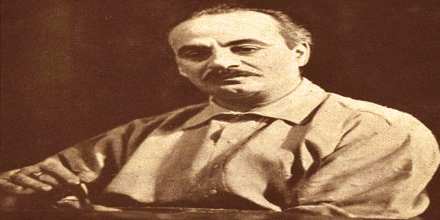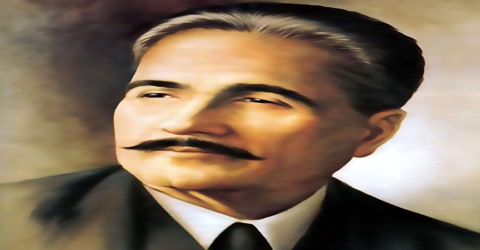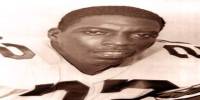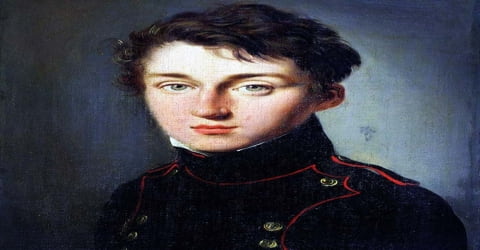Kahlil Gibran – Arabic Language Poet (1883- 1931)
Full name: Gibran Khalil Gibran
Arabic: جبران خليل جبران
Date of Birth: January 6, 1883
Place of birth: Bsharri, Mount Lebanon Mutasarrifate, Ottoman Syria
Date of death: April 10, 1931 (aged 48)
Place of death: New York City, United States
Occupation: Poet, painter, writer, philosopher, theologian, visual artist
Nationality: Lebanese and American
Genre: Poetry, parable, short story
Literary movement: Mahjar, New York Pen League
Notable works: The Prophet, Broken Wings
Early Life
Khalil Gibran was born on January 6, 1883, in Bsharri, Mount Lebanon Mutasarrifate, Ottoman Syria. He was a Lebanese-American artist, poet, and writer of the New York Pen League.
Khalil Gibran was a writer and poet whose book The Prophet, achieved cult status in the United States. The book of essays grew in popularity during the 1930s and found a particular resurgence in the counterculture movement of 1960s America. He was also a prolific artist who studied in Paris hundreds of paintings and drawings.
In the Arab world, Gibran is regarded as a literary and political rebel. His romantic style was at the heart of a renaissance in modern Arabic literature, especially prose poetry, breaking away from the classical school. In Lebanon, he is still celebrated as a literary hero.
Gibran is the third best-selling poet of all time, behind Shakespeare and Laozi.
He immigrated with his mother and siblings to Boston in 1895 – his father remained in Lebanon to address financial matters. Gibran would return to Lebanon three years later to continue his education but returned to America after illness took the life of one of his sisters.
He met Mary Haskell who encouraged his artistic development. During his life, Gibran was a prolific artist who created hundreds of paintings and drawings.
In 1904, Gibran started writing articles for the Arabic-speaking-émigré newspaper Al Muhajer (The Emigrant), marking his first published written work.
His first publication was called Vision, a romantic essay that portrayed a caged bird amidst an abundance of symbolism. His Arabic writing had a colloquial feel, which made it accessible to his audience. According to Gibran, rules of language were meant to be broken and he went on encouraging Arab émigré writers to break out of tradition and seek an individual style.
Gibran was born into a Maronite Christian family and raised in Maronite schools. He was influenced not only by his own religion but also by Islam, and especially by the mysticism of the Sufis. His knowledge of Lebanon’s bloody history, with its destructive factional struggles, strengthened his belief in the fundamental unity of religions, which his parents exemplified by welcoming people of various religions in their home. Themes of influence in his work were Islamic/Arabic art, European Classicism and Romanticism (William Blake and Auguste Rodin,) pre-Raphelite Brotherhood, and more modern symbolism and surrealism. Major personal influences on Gibran include Fred Holland Day, Josephine Preston Peabody who called Gibran himself a “prophet”, and Mary Haskell who was his patron. Gibran also worked with St. Mark’s Church in-the-Bowery on a number of occasions both in terms of art like his drawings and readings of his work, and in religious matters.
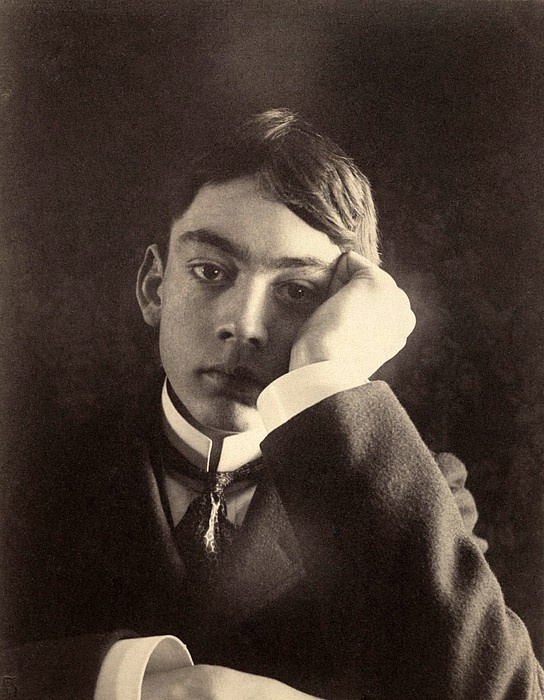
Educational Career
As a young man Gibran immigrated with his family to the United States, where he studied art and began his literary career, writing in both English and Arabic.
In the Arab world, Gibran is regarded as a literary and political rebel. His romantic style was at the heart of a renaissance in modern Arabic literature, especially prose poetry, breaking away from the classical school.
Gibran received no formal schooling during his youth in Lebanon. However, priests visited him regularly and taught him about the Bible and the Arabic language (Lebanese Arabic).
Gibran started school on September 30, 1895. School officials placed him in a special class for immigrants to learn English. Gibran also enrolled in an art school at Denison House, a nearby settlement house. Through his teachers there, he was introduced to the avant-garde Boston artist, photographer, and publisher Fred Holland Day, who encouraged and supported Gibran in his creative endeavors. A publisher used some of Gibran’s drawings for book covers in 1898.
At the age of fifteen, Gibran returned to his homeland to study at a Maronite-run preparatory school and higher-education institute in Beirut, called “al-Hikma” (The Wisdom).
In 1908, Gibran went to study art in Paris for two years.
Career
Gibran was a great admirer of poet and writer Francis Marrash, whose works he had studied at al-Hikma school in Beirut. According to orientalist Shmuel Moreh, Gibran’s own works echo Marrash’s style, many of his ideas, and at times even the structure of some of his works; Suheil Bushrui and Joe Jenkins have mentioned Marrash’s concept of universal love, in particular, in having left a “profound impression” on Gibran. The poetry of Gibran often uses formal language and spiritual terms; as one of his poems reveals: “But let there be spaces in your togetherness and let the winds of the heavens dance between you. Love one another but make not a bond of love: let it rather be a moving sea between the shores of your souls.”
Many of Gibran’s writings deal with Christianity, especially on the topic of spiritual love. But his mysticism is a convergence of several different influences: Christianity, Islam, Judaism and theosophy. He wrote: “You are my brother and I love you. I love you when you prostrate yourself in your mosque, and kneel in your church and pray in your synagogue. You and I are sons of one faith—the Spirit.
Gibran’s works, written in both Arabic and English, are full of lyrical outpourings and express his deeply religious and mystical nature. The Prophet (1923), a book of poetic essays, achieved cult status among American youth for several generations. Having been translated into more than forty languages, it was one of the bestselling books of the twentieth century in the United States.
Elvis Presley was deeply affected by Gibran’s The Prophet after receiving his first copy in 1956.
Gibran was an accomplished artist, especially in drawing and watercolor, having attended the Académie Julian art school in Paris from 1908 to 1910, pursuing a symbolist and romantic style over the then up-and-coming realism. Gibran held his first art exhibition of his drawings in 1904 in Boston, at Day’s studio.
In 1908, Gibran went to study art in Paris for two years. While there he met his art study partner and lifelong friend Youssef Howayek. While most of Gibran’s early writings were in Arabic, most of his work published after 1918 was in English. His first book for the publishing company Alfred A. Knopf, in 1918, was The Madman, a slim volume of aphorisms and parables written in biblical cadence somewhere between poetry and prose.
Gibran also took part in the New York Pen League, also known as the “immigrant poets” (al-mahjar), alongside important Lebanese-American authors such as Ameen Rihani, Elia Abu Madi, and Mikhail Naimy, a close friend and distinguished master of Arabic literature, whose descendants Gibran declared to be his own children, and whose nephew, Samir, is a godson of Gibran’s.
Throughout his life, Gibran’s Arabic writings did not receive the critical acclaim his English books did, which lead him later to concentrate more on his English writings. Gibran’s first Arabic written work came out in 1905 with the publication of Nubthah Fi Fan al Musiqa (Music).
Gibran also started a column in Al Muhajer called Tears and Laughter that was to form the basis of his book A Tear and a Smile. At the time, Gibran published several Arabic poems and wrote in newspapers about various subjects related to love, truth, beauty, death, good and evil. In 1906, Gibran published his second Arabic book Arayis Al Muruj (The Nymphs of the Valley), a collection of three allegories that take place in Northern Lebanon. The allegories – Martha, Yuhanna the Mad, Dust of the Agesandthe Eternal Fire – dealt with issues such as prostitution, religious persecution, reincarnation and pre-ordained love. The allegories were heavily influenced by stories he once heard in Bsharri, and his fascination with the Bible, the mystical, and the nature of love. Gibran returned later to the subject of madness in his English book The Madman, whose beginnings can be traced to Gibran’s early Arabic writings.
His more than seven hundred images include portraits of his friends WB Yeats, Carl Jung and Auguste Rodin. A possible Gibran painting was the subject of a September 2008 episode of the PBS TV series History Detectives. His drawings collected by Mathaf: Arab Museum of Modern Art in Doha.
Gibran was by no means a politician. He used to say: “I am not a politician, nor do I wish to become one” and “Spare me the political events and power struggles, as the whole earth is my homeland and all men are my fellow countrymen.”
In 1913, Gibran started working on The Madman, exploring a subject that fascinated him ever since. He learned about the history of treating the mad in Lebanon; and in his hometown of Bsharri, he heard how the mad were thought to be possessed by the spirit of the jinn (the devil), with the church in charge of exorcising the devil out of the possessed people.
Meanwhile, the love relationship between Mary and Gibran dwindled, as quarrels over money, sex and marriage led to an interesting development. Soon Mary was to become Gibran’s mentor and editor, initiating a tutorial course that aims at improving his English writing while developing his cultural education.
Gibran attempted to translate his works for Mary to read and edit, but frustrated with the difficulties of translating and the language barrier which prevented Mary from helping him improve his writings, Mary encouraged Gibran to drop translating his Arabic works and concentrate instead on writing directly in English.
His first publication was called Vision, a romantic essay that portrayed a caged bird amidst an abundance of symbolism. His Arabic writing had a colloquial feel, which made it accessible to his audience. According to Gibran, rules of language were meant to be broken and he went on encouraging Arab émigré writers to break out of tradition and seek an individual style.
Personal Information

Gibran’s home in Bsharri.
Gibran was born into a Maronite Catholic family from the historical town of Bsharri in northern Mount Lebanon, then a semi-autonomous part of the Ottoman Empire. His mother, Kamila, daughter of a priest, was thirty when he was born; his father, Khalil, was her third husband. As a result of his family’s poverty, Gibran received no formal schooling during his youth in Lebanon.
Khalil Gibran, his father – whose name the child inherited – was a tax collector in Bsharri. His mother Kamileh Rahmeh, the daughter of a Maronite clergyman, was thirty when she begot Gibran from her second husband Khalil. Gibran had an elder half-brother, Peter, and two younger sisters, Mariana and Sultana.
Storms similar to the ones at home, where his father’s heavy drinking fueled his imperious temper. Indeed, Gibran’s father barely shouldered the responsibilities of his family and quickly frittered away his small income: this atmosphere of distressing poverty and bitter recriminations weighed on the family and on Gibran…
Amidst intrigue and corruption, the father found himself facing charges of embezzlement. Although Kamileh tried to clear his name, her husband was found guilty and all his property was confiscated. Like many before her, Kamileh had to make a stark choice: either to endure a life of increasing poverty, or to embark on an arduous journey to the U.S. to seek a better life for her children.
On June 25, 1895, the strong-willed mother embarked with her four children on a voyage to the American shores of New York, leaving the father behind in Lebanon.
The Gibran family settled in Boston’s South End where Kamileh began to work as a peddler on the streets.
His mother began working as a seamstress peddler, selling lace and linens that she carried from door to door.
Gibran’s mother, along with his elder brother Peter, wanted him to absorb more of his own heritage rather than just the Western aesthetic culture he was attracted to.
Two weeks before he returned to Boston, his sister Sultana died of tuberculosis at the age of 14. The year after, Peter died of the same disease and his mother died of cancer. His sister Mariana supported Gibran and herself by working at a dressmaker’s shop.
Following the three family deaths, Gibran sold out the family business and began improving both his Arabic and English writings, a twin task which he was to pursue for the rest of his life.
Gibran held his first art exhibition of his drawings in 1904 in Boston, at Day’s studio. During this exhibition, Gibran met Mary Elizabeth Haskell, a respected headmistress ten years his senior. The two formed an important friendship that lasted the rest of Gibran’s life. The nature of their romantic relationship remains obscure; while some biographers assert the two were lovers but never married because Haskell’s family objected, other evidence suggests that their relationship never was physically consummated. Haskell later married another man, but then she continued to support Gibran financially and to use her influence to advance his career. She became his editor, and introduced him to Charlotte Teller, a journalist, and Emilie Michel (Micheline), a French teacher, who accepted to pose for him as a model and became close friends.

Mary Elizabeth Haskell
Gibran also took part in the New York Pen League, also known as the “immigrant poets” (al-mahjar), alongside important Lebanese-American authors such as Ameen Rihani, Elia Abu Madi, and Mikhail Naimy, a close friend and distinguished master of Arabic literature, whose descendants Gibran declared to be his own children, and whose nephew, Samir, is a godson of Gibran’s.
Death
In 1928, Gibran’s health began to deteriorate, and the pain in his body, due to his nervous state, was increasing, driving Gibran to seek relief in alcohol. Gibran died in New York City on April 10, 1931, at the age of 48. The causes were cirrhosis of the liver and tuberculosis. Gibran expressed the wish that he be buried in Lebanon. This wish was fulfilled in 1932, when Mary Haskell and his sister Mariana purchased the Mar Sarkis Monastery in Lebanon, which has since become the Gibran Museum.
His will left large amounts of money to his country. Mary, Mariana and Henrietta, all attended Gibran’s studio, organizing his works and sorting out books, illustrations and drawings.
And to fulfill Gibran’s dream, Marianna and Mary travelled in July of 1931, to Lebanon, to bury Gibran in his hometown of Bsharri. The citizens of Lebanon received his coffin with celebration rather than mourning, rejoicing “their prophet’s” homecoming.

The Gibran Museum and Gibran’s final resting place, in Bsharri.
By January of 1932, the Mar Sarkis monastery was bought and Gibran’s body was moved to his final resting-place.
Honours
- Lebanese Ministry of Post and Telecommunications published a stamp in his honor in 1971.
- Gibran Museum in Bsharri, Lebanon
- Gibran Khalil Gibran Garden, Beirut, Lebanon
- Gibran Khalil Gibran collection, Museo Soumaya, Mexico.
- Kahlil Gibran Street, Montreal, Quebec, Canada inaugurated on September 27, 2008 on occasion of the 125th anniversary of his birth.
- Gibran Kahlil Gibran Skiing Piste, The Cedars Ski Resort, Lebanon
- Kahlil Gibran Memorial Garden in Washington, D.C., dedicated in 1990
- Elmaz Abinader, Children of Al-Mahjar: Arab American Literature Spans a Century
- Gibran Memorial Plaque in Copley Square, Boston, Massachusetts see Kahlil Gibran (sculptor).
- Khalil Gibran International Academy, a public high school in Brooklyn, NY, opened in September 2007
- Kahlil Gibran, Bust, Yerevan, Armenia (2005)
- Khalil Gibran School Rabat, Moroccan and British international school in Rabat, Morocco
- Pavilion K. Gibran at École Pasteur in Montreal, Quebec, Canada
- Khalil Gibran Park (Parcul Khalil Gibran) in Bucharest, Romania
- Gibran Kalil Gibran sculpture on a marble pedestal indoors at Arab Memorial building at Curitiba, Paraná, Brazil
- Gibran Khalil Gibran Memorial, in front of Plaza de las Naciones, Buenos Aires.
- Belo Horizonte, Minas Gerais, Brazil. Bust (see photo on right)
- Gibran Khalil Gibran Cultural Space in northern Caracas, Venezuela.
As for Gibran’s given name: “Gibran’s full name in Arabic was Gibran Khalil Gibran, the middle name being his father’s. It is a convention among the Arabs to use the father’s name after one’s first name. Gibran always signed his full name in his Arabic works; however, in his English writings, he dropped the first name and changed the correct spelling of “Khalil” into “Kahlil”, this at the instigation of his English teacher at the Boston school he attended between 1895 and 1897.”
